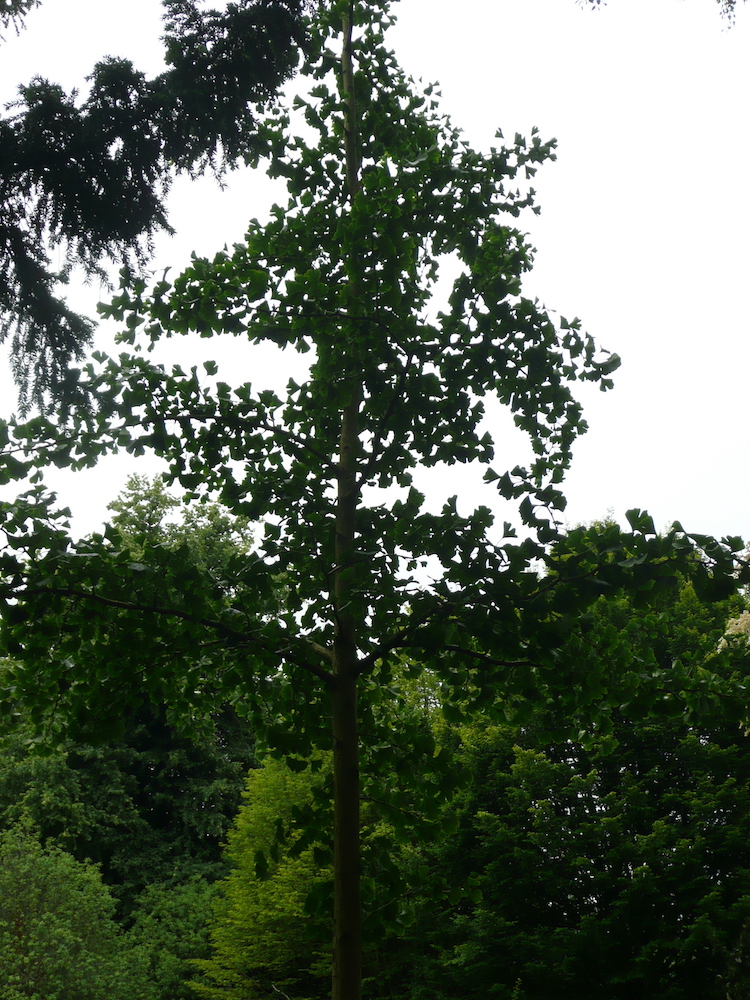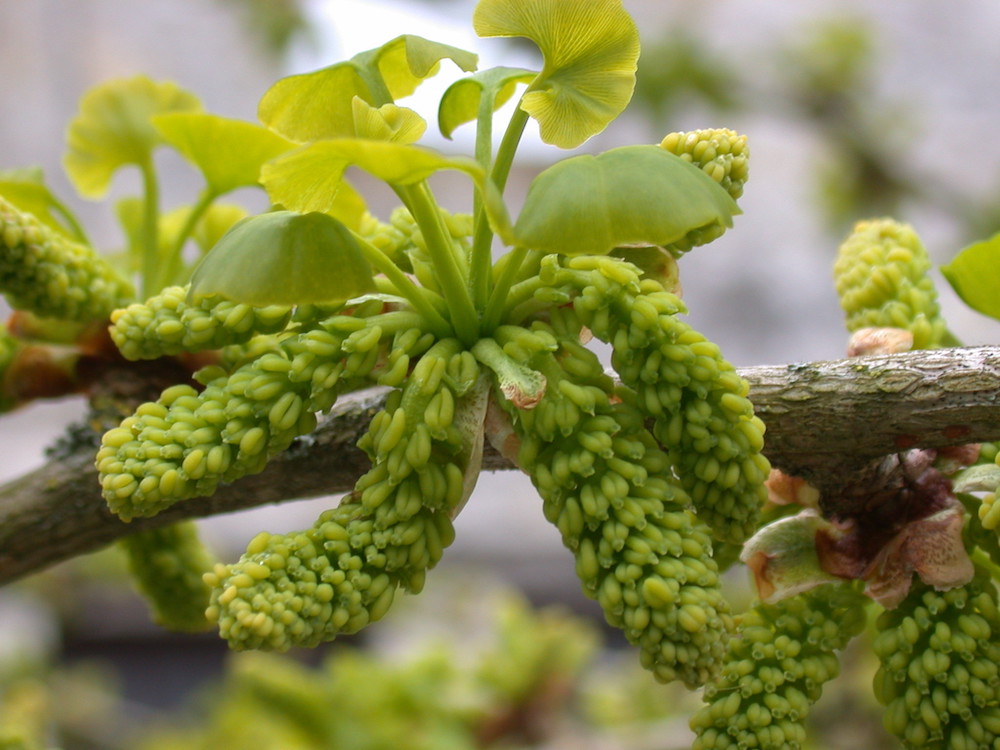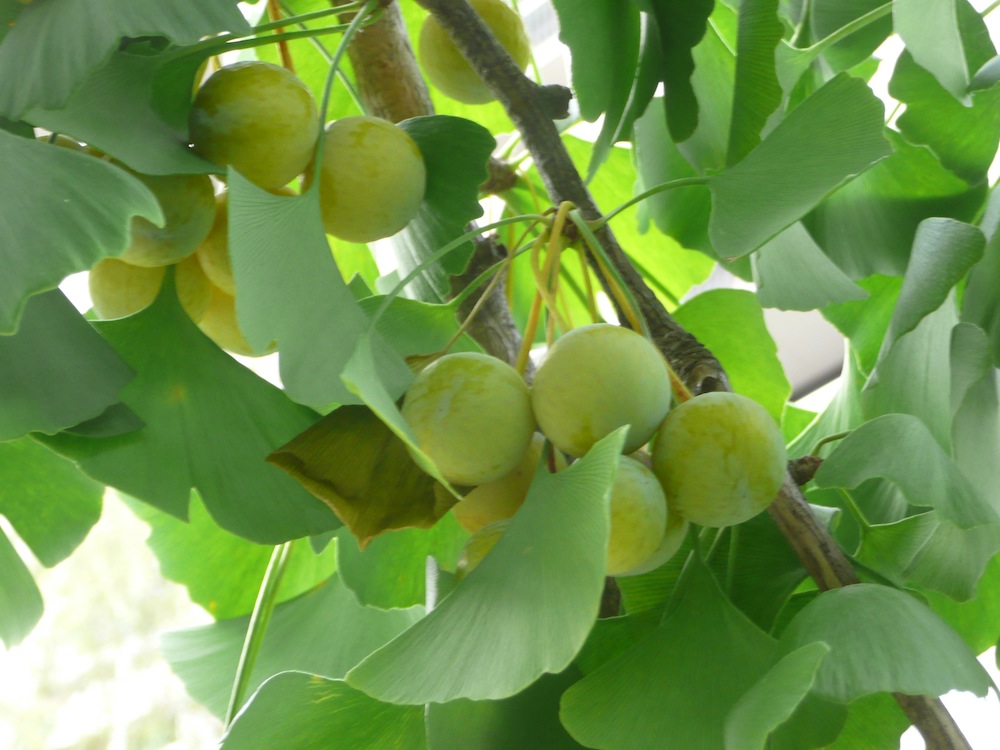Ginkgo biloba L.
Maidenhair tree
The tree tag number relates to the black tree-maintenance tags, usually fixed on the trunk, 2 to 3m above ground level.
The ginkgo is a unique species with no living relatives. Other members of the Ginkgoales order were growing in the Permian 270 million years ago. It is unclear whether there are any living wild populations, but it has been cultivated in China for over 1000 years and in the last 200 years has been widely grown around the world, particularly as a city tree. Fine specimens may be seen in many botanic gardens, for example a huge male tree in Kew gardens dating from 1762 and a female tree in Berne Botanic Gardens.
The leaf arrangement on ginkgo is similar to that on some conifers such as cedars (Cedrus spp) and larches (Larix spp). On the young shoots the leaves are alternate, but on older branches, short shoots form with bunches of leaves. Ginkgo trees are dioecious; male trees have bunches of anthers in a catkin. The ginkgo is unique among trees in producing motile male gametes as in cycads and the lower plants such as mosses and liverworts. The separate female trees produce ovules in pairs. The ovules develop into a fruit-like structure with a fleshy outer layer around the seed. Unfortunately these have a most unpleasant smell and make a sticky mess round the base of the tree. For this reason almost all ginkgo trees planted in public areas are male. The seed coats (strictly these are not fruit), are valued in Chinese medicine. Ginkgo trees have proved to be a very successful city street tree notably in New York, being tolerant of pollution. The male tree in Florence Botanic Garden had a single female branch grafted onto it so that both the male and female structures could be taught to students of botany and medicine.







Photos taken in Belfast Botanic Gardens in 2010/11. Copyright: Friends of Belfast Botanic Gardens.
